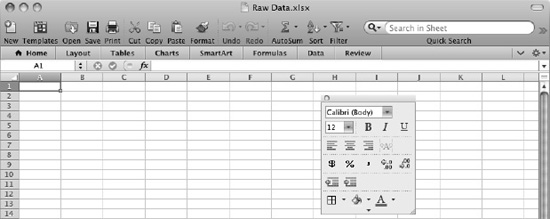Secrets of the Toolbars
Excel comes with two built-in toolbars—Standard and Formatting—but you can create as many others as you need. You can choose which toolbars to display and how to display them. And you can customize both the built-in toolbars and your own toolbars, as you'll see in Chapter 2.
Choosing Which Toolbars to Display
First, decide which toolbars you want to display. The easiest way to do this is to Ctrl+click or right-click a toolbar that's displayed, click or highlight the Toolbars item on the context menu, and then click the toolbar you want to display or hide. Excel puts a check mark next to a displayed toolbar on the Toolbars submenu. If the toolbar is displayed, you click to remove the check mark and hide the toolbar.
If no toolbar is displayed, choose View ![]()
Toolbars to display the Toolbars submenu on the View menu, and then click the toolbar you want to display.
Switching the Standard Toolbar Between Icons and Text and Icons Only
Next, choose whether to display the buttons on the Standard toolbar as icons with text labels or as icons only. If you find the text labels make the icons easier to identify, they're worth the small amount of extra space they take up.
To switch between icons and labels and icons only, Ctrl+click or right-click the Standard toolbar and then click the Icon and Text item or the Icon Only item on the context menu, as appropriate.
NOTE: The Formatting toolbar displays only icons—you don't have the option of displaying text labels for its buttons.
Undocking and Docking the Formatting Toolbar
At first, Excel displays the Standard toolbar at the top of the window, between the title bar and the Ribbon (unless you've turned off the Ribbon). The same goes for the Formatting toolbar if you display it.
The Standard toolbar remains docked all the time, but you can undock the Formatting toolbar if you prefer to have it floating, so you can position it freely on your Desktop.
To undock the Formatting toolbar, Ctrl+click or right-click the toolbar and then click Dock Toolbar in Window on the context menu to remove the check mark. Excel undocks the toolbar and displays it as a floating toolbar that you can reposition as needed (see Figure 1–7).

Figure 1–7 . You can undock the Formatting toolbar to position it anywhere on the screen. To free up the Excel window, position the toolbar outside the window. When you need the formatting controls close to your data, position the toolbar over the Excel window like this.
